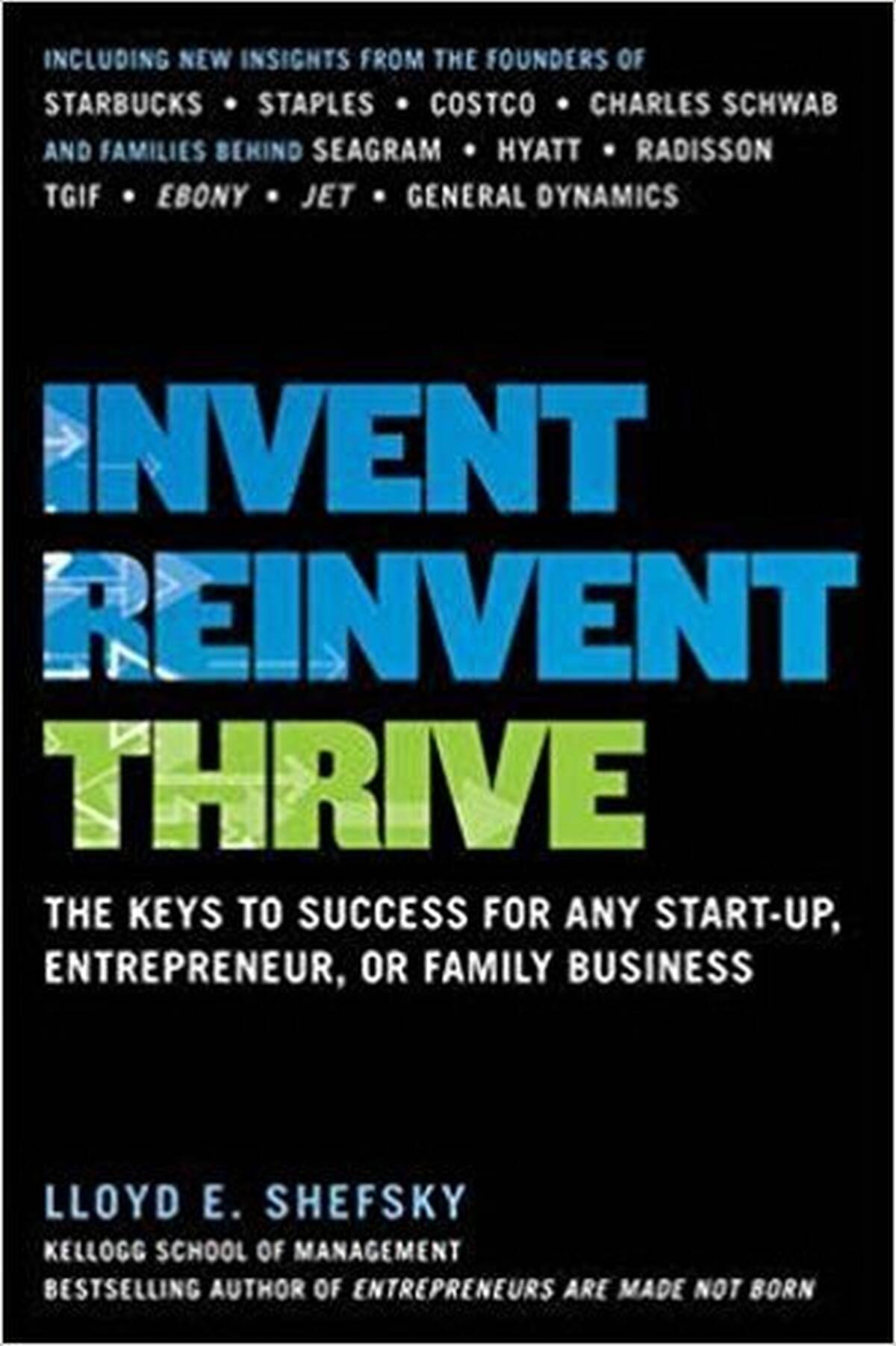Leadership Aug 4, 2014
Is Constant Reinvention the Key to Success?
An interview with Lloyd Shefsky about Invent, Reinvent, Thrive.

In business, past achievements in no way guarantee future success. Enduring companies—and even individual entrepreneurs—earn their longevity through near constant reinvention. Lloyd Shefsky, a clinical professor of managerial economics and decision sciences at the Kellogg School, as well as the founder and co-director of the Center for Family Enterprise, takes on this topic in his new book, Invent, Reinvent, Thrive.
Lloyd sat down with Kellogg Insight to discuss how entrepreneurs, companies, and especially family businesses can thrive in today’s market. (This interview has been edited for length and clarity. For a longer version of our conversation, check out the accompanying podcast. You can also read an excerpt from the book—about Larry Levy’s reinvention from real estate mogul to stadium caterer—here.)
Kellogg Insight: In your book you interview a number of CEOs and entrepreneurs about how they’ve reinvented themselves and their companies. What made you decide a book like this was necessary?
Lloyd Shefsky: I’ve spent the last 20 years trying to find out what it is that makes some people succeed and some people not succeed, both in entrepreneurship and family business. What really triggered the book was watching clients who succeeded because they reinvented themselves—first of all, to become entrepreneurs, but then they reinvented their business periodically. The length of time between reinventions varied—by business, by individual—but they were all doing it. And so I decided to go out and interview people and find out if reinvention is real.
KI: What are some examples of reinventions that can help illustrate their importance?
Shefsky: The most famous example would probably be Howard Schultz. Howard Schultz never ran a restaurant, never made coffee for a living. He had lived in Europe and understood what coffee houses in Europe were about. But he had a lot of trouble explaining it.
Now, he’s a great salesman, but he could not sell people on investing in Starbucks. He was, as he jokes, “trying to convince the American public—who were used to bad coffee—that they should pay a fortune to get some kind of different coffee that they’d never tasted in a paper cup and be happy.”
But that wasn’t what he was selling at all. I think he was selling membership in a club. I think the fact that you get a Doppio—you don’t get a double espresso—was like the secret code words we used as kids when we had a club. It was a place “where everybody knows your name.” It was the atmosphere, and the concept of going somewhere else, that made it successful.
Every business that reinvents has a set of goals and a methodology for whatever their reinvention it is.
The second part of Starbucks’ reinvention began in 2008 when the world was going to hell. Starbucks volume and profits went down. People thought, “In this recession, nobody will be able to afford to buy expensive coffee.” And simultaneously, of course, Dunkin Donuts, McDonald’s, and everyone else were saying, “We’re just as good as they are and we’re cheap.” So he had a massive problem. Howard went out and did an analysis. All he had to do was say, “Well, the whole world is saying it’s a price problem. Fix the price and I’ve got a solution.” Instead he went out and went from store to store, and what he realized was that the essence of Starbucks had changed.
And the change came down to something so simple: In order to get more efficient flow-through of product, they bought a new kind of coffeemaker that did three things: it eliminated the noise, it eliminated the aroma, and it was tall, so it blocked the customer’s view of the barista. It was no longer a place “where everybody knows your name”—you couldn’t even see the person. By changing those three experiential things he resurrected Starbucks. That’s a reinvention that’s going back to what you were, not going to something new.
KI: A large portion of your book focuses on family businesses, an area in which you have particular expertise. What’s special about these family businesses? What unique challenges do family businesses face when it comes to this reinvention?
Shefsky: So, every business that reinvents has a set of goals and a methodology for whatever their reinvention it is. Every family that reinvents also has a set of goals and a methodology. They’re rarely the same. It’s like playing chess versus playing three-dimensional chess: You have this overlay of emotional rules over a very scientific or logical set of business rules, and the likelihood that both sets of rules are going to blend easily is pretty remote. And the statistics are awful. Ninety percent of family businesses will not make it successfully into the third generation.
So let’s assume Grandpa starts a business and hands it on to Mom, who builds the business tremendously. And now we come to the third generation. The expectation has to be that someone in that third generation, at a rather young age, is going to have the ability to run a business so extensive that Mom and Grandpa probably couldn’t even run it today. These expectations are pretty artificial. What are the odds that the third generation is going to go out into the industry and learn on somebody else’s dime and then come back and run the company? It takes an extraordinary talent to be able to do that.
The alternative is that the family can hire a professional. Well, then you get into a whole set of other complications. Often family businesses just can’t tolerate that outsider coming in.
KI: What do you want readers to take away from your book?
Shefsky: The first thing is, reinvention is really critical. Yes, it takes confidence. Yes, it takes guts. Yes, it takes skill. But you really have to figure out how you’re going to reinvent.
A lot of people are afraid to reinvent because of naysayers. Some say ignoring the naysayers is the answer. I don’t think that is the answer. You just have to become smarter about the product or the service or the business so that you know what part of the naysaying to ignore and what part to take as a warning.
I’d also say, recognize that even the best success stories you can imagine miss things and mess up things. So that’s another kind of reinvention: After you mess up how do you reinvent it to put it back together?
Shefsky, Lloyd. Invent, Reinvent, Thrive. New York, NY: McGraw-Hill, 2014.


